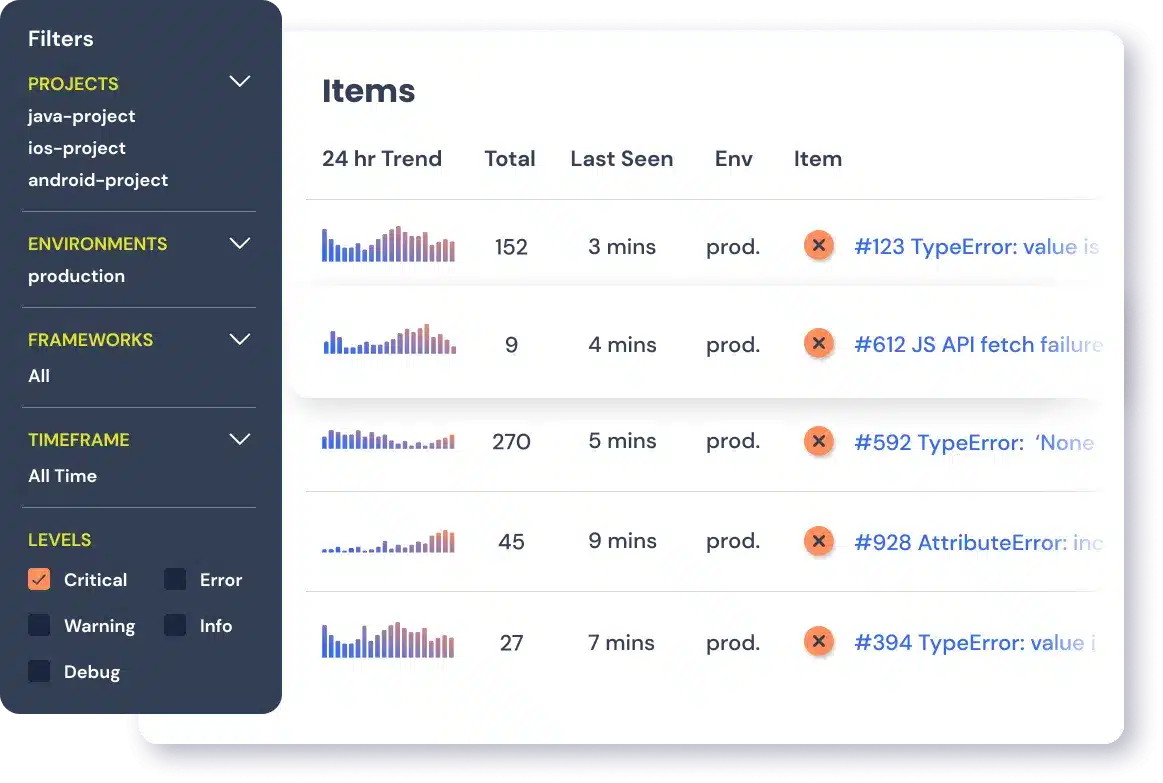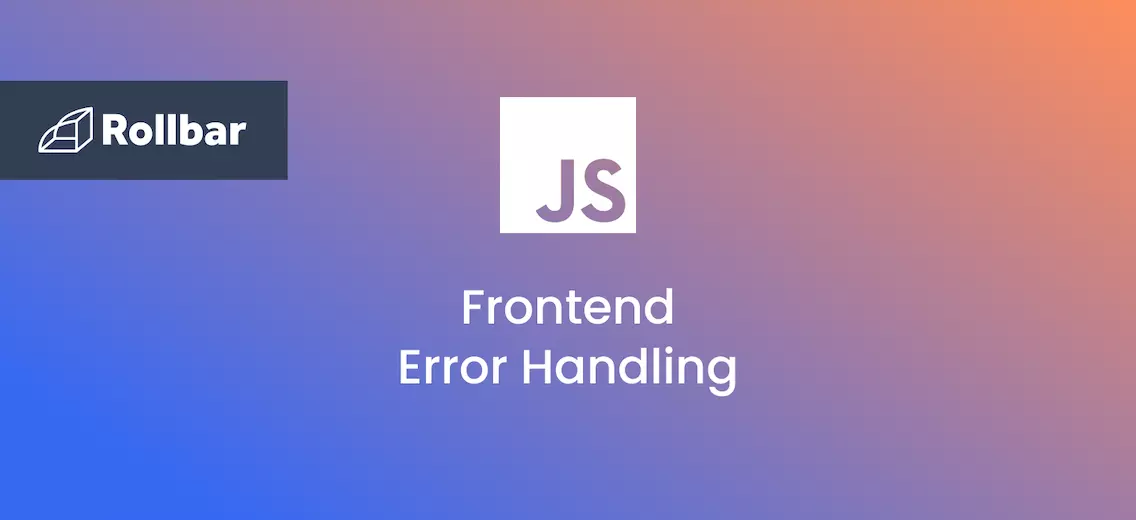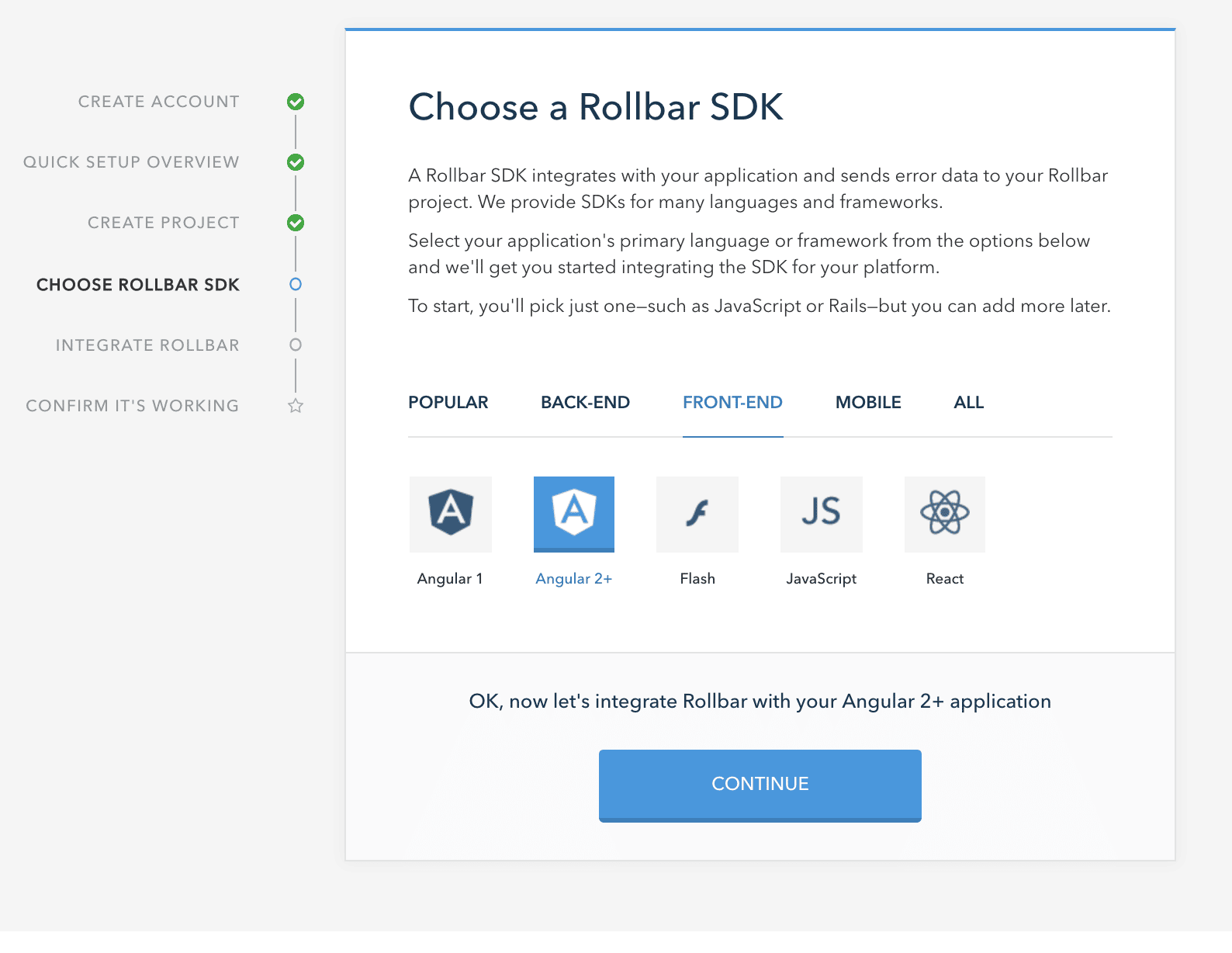To enhance user experience, avoid data loss, and guard against security vulnerabilities, frontend errors must be handled properly.
In this post, we'll cover the most common types of frontend errors and best practices for handling them. We'll also explore how to use the popular error monitoring platform Rollbar to track and manage errors.
Common types of frontend errors
There are several types of frontend errors that can occur. The most common are:
JavaScript runtime errors
These occur when the JavaScript code in your application is executed in the browser and something goes wrong. Examples include syntax errors (e.g. a missing semicolon in your code) and reference errors (e.g. using a variable that has not been defined).
Network errors
These occur when there is a problem with the network connection between the browser and your application's server. Examples include failed HTTP requests (e.g. when the server is down or the request times out) and DNS errors (e.g. when the domain name cannot be resolved).
User input errors
These occur when users provide invalid or incomplete input to your application. Examples include validation errors (e.g. entering an invalid email address) and required field errors (e.g. forgetting to fill out a required form field).
Best practices for frontend error handling
To effectively handle frontend errors, follow these best practices:
Display user-friendly error messages
When an error occurs, always provide a clear and helpful error message. This helps users understand what went wrong and potentially guide them towards a solution. For example, if a required field is not filled out, you could display a message like "Please enter a value for field X".
Log errors for debugging and analysis
It's also a good idea to log errors, so that you can track them and debug any issues that arise. This can be especially useful for identifying patterns or trends in the types of errors that are occurring. For example, if you notice that a particular network error is happening frequently, you can investigate and fix the underlying issue.
Protect sensitive information in error messages
Avoid exposing sensitive information in your error messages. This can include things like passwords, API keys, or other confidential data. Instead, you should aim to provide a general error message that doesn't reveal any sensitive information. For example, instead of displaying an error message like "The password qwerty123 is incorrect" you could say "The password you provided was incorrect".
Use Rollbar for frontend error handling
Rollbar is a popular tool that provides a range of features for tracking, analyzing, and managing errors, including:
- Real-time error tracking: Rollbar allows you to track errors in real-time, so you can identify and fix issues as they occur.
- Error grouping and deduplication: Rollbar automatically groups similar errors together, so you can see the full picture of what's happening in your app. It also deduplicates errors, so you don't have to deal with multiple reports of the same issue.
- Error analysis and reporting: Rollbar provides detailed error reports, including information about the error itself, the context in which it occurred, and how often it has happened. This can help you identify trends and patterns in your errors, and prioritize fixes based on their impact and frequency.
- Error resolution tools: Rollbar also offers a range of tools to help you resolve errors, including integrations with popular project management and bug tracking platforms, and the ability to assign errors to team members for further investigation.
To use Rollbar for frontend error handling, you will first need to install and configure the Rollbar SDK in your web application. For example this Javascript quick start guide will help you get Rollbar up and running quickly in various JS platforms and toolchains.
Once the Rollbar.js script is added, you can send caught errors or custom log messages. All of the following methods are fully-asynchronous and safe to call anywhere in your code after the script tag.
// Caught errors
try {
doSomething();
} catch (e) {
Rollbar.error("Something went wrong", e);
}
// Arbitrary log messages. 'critical' is most severe; 'debug' is least.
Rollbar.critical("Connection error from remote Payments API");
Rollbar.error("Some unexpected condition");
Rollbar.warning("Connection error from Twitter API");
Rollbar.info("User opened the purchase dialog");
Rollbar.debug("Purchase dialog finished rendering");
// Can include custom data with any of the above.
// It will appear as message.extra.postId in the Occurrences tab
Rollbar.info("Post published", {postId: 123});
// Callback functions
Rollbar.error(e, function(err, data) {
if (err) {
console.log("Error while reporting error to Rollbar: ", e);
} else {
console.log("Error successfully reported to Rollbar. UUID:", data.result.uuid);
}
});
Rollbar then gives you a real-time feed of all errors — including unhandled exceptions — so you’ll never miss a bug.

Conclusion and further resources
In this post, we discussed the importance of logging frontend errors and explored some best practices for handling errors. We also looked at how to use Rollbar, a popular error tracking tool, to track and manage errors.
If you want to learn more about frontend error handling, here are some additional resources to check out:
- The Rollbar documentation provides detailed information about using Rollbar for frontend error handling, including installation instructions and usage examples.
- The JavaScript Error object reference on MDN provides a comprehensive overview of the different types of errors that can occur in Javascript and how to handle them.
- The Rollbar blog offers a wealth of information on error tracking and management, including tips, best practices, and case studies.








